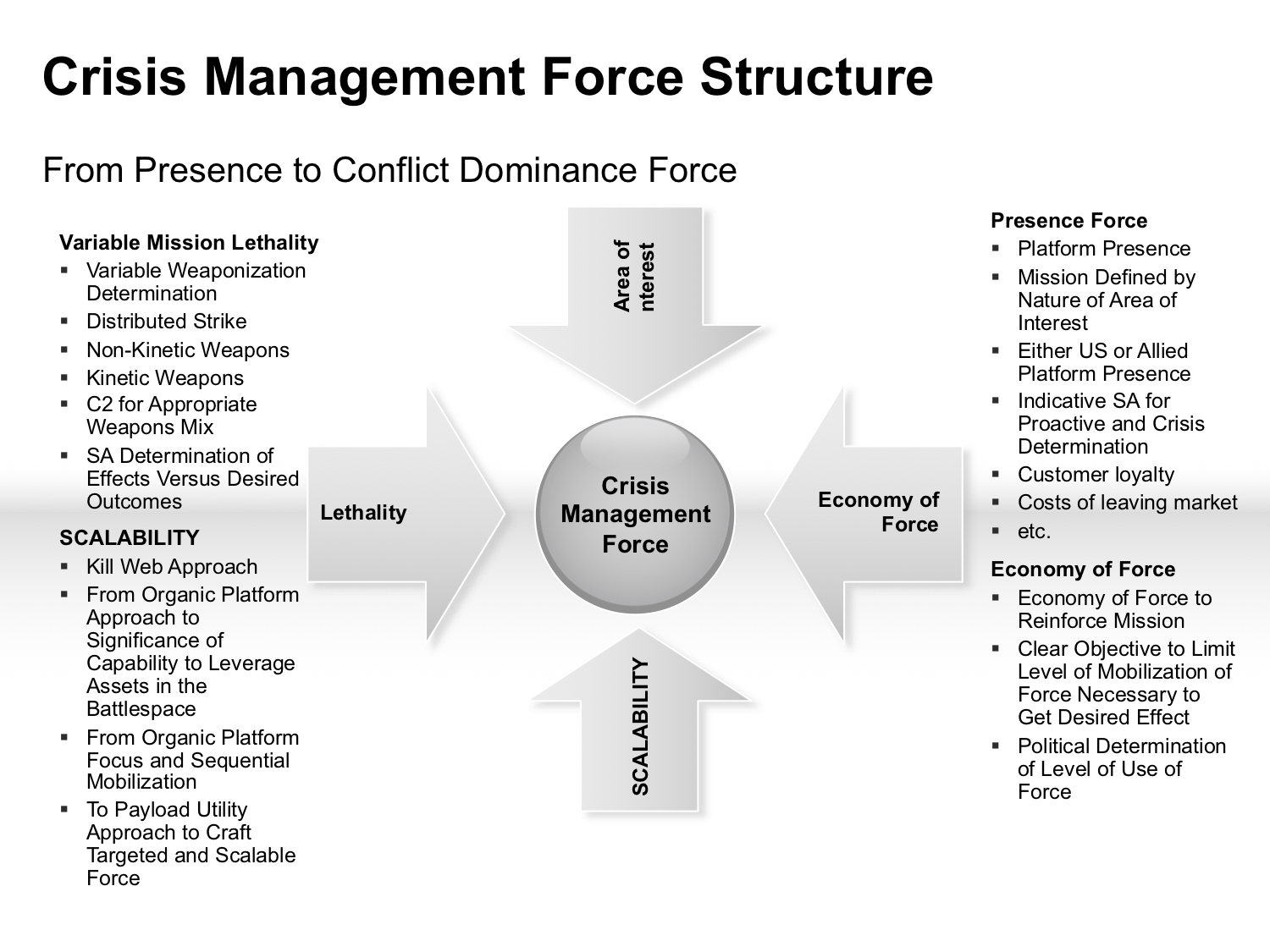Crafting a Force for Full-Spectrum Crisis Management: The F-35 and the Kill Web
The liberal democracies are facing a key strategic shift from a primary focus on the land wars in the Middle East to facing the challenges posed by peer competitors.
The Pentagon has referred to this as the return of Great Power competition which requires a significant shift from the forces configured for global deployments against adversaries found in Counter-Insurgency environments to having forces able to compete in higher intensity competition and to engage in and prevail in crisis management situations with peer competitors.
Because the adversaries are building to mass and are emphasizing expansion of strike capabilities controlled by a very hierarchical command structure, the kind of force which will best fit Western interests and capabilities is clearly a. distributed one.
Fortunately, the technology is already here to build effectively down this path, a path which allows engagement at the low end and provides building blocks to higher end capabilities.
The force we need to build will have five key interactives capabilities:
Enough platforms with allied and US forces in mind to provide significant presence;
A capability to maximize economy of force with that presence;
Scalability whereby the presence force can reach back if necessary at the speed of light and receive combat reinforcements;
Be able to tap into variable lethality capabilities appropriate to the mission or the threat in order to exercise dominance.
And to have the situational awareness relevant to proactive crisis management at the point of interest and an ability to link the fluidity of local knowledge to appropriate tactical and strategic decisions.
To be blunt about the last point – a cutting edge new system, the Triton UAV, is part of the new maritime SA force for the US and selected allies. The SA on this aircraft needs to be used by the presence forces and not be part of the “intelligence collection” team back in the United States. Or put in other words, the new challenges require a significant challenge in terms of how the very un-agile US intelligence process tries to “own” information.
If we consider the nature of the crisis management regime which is being shaped to deal with peer competitors, how to shape and operate a force which is agile enough to show up and powerful enough to see the crisis through to success, and ask how the F-35, notably as a global enterprise can enable, participate in, and trigger the kill web approach most suited to this challenge, how might we shape an answer?
Our new special report addresses these questions.
The nature of the threat facing the liberal democracies was well put by a senior Finnish official: “The timeline for early warning is shorter; the threshold for the use of force is lower.”
What is unfolding is that capabilities traditionally associated with high end warfare are being drawn upon for lower threshold conflicts, designed to achieve political effect without firing a shot.
Higher end capabilities being developed by China are Russia are becoming tools to achieve political-military objectives throughout the diplomatic engagement spectrum.
This means that not only do the liberal democracies need to shape more effective higher end capabilities but they need to learn how to use force packages which are making up a higher end, higher tempo or higher intensity capability as part of a range of both military operations but proactive engagement to shape peer adversary behavior.
One is buying fifth generation aircraft not simply to prepare for an all-out war to defend the democracies, but to provide tools for governments to defend their interests throughout the spectrum of warfare and co-associated diplomatic activity as well.
It is about using military force in ways appropriate to the political mission.
We have argued that the F-35 global fleet provides for new capabilities appropriate to the strategic shift.
The Strategic Shift: The Role and Impact of the F-35 Global Enterprise

